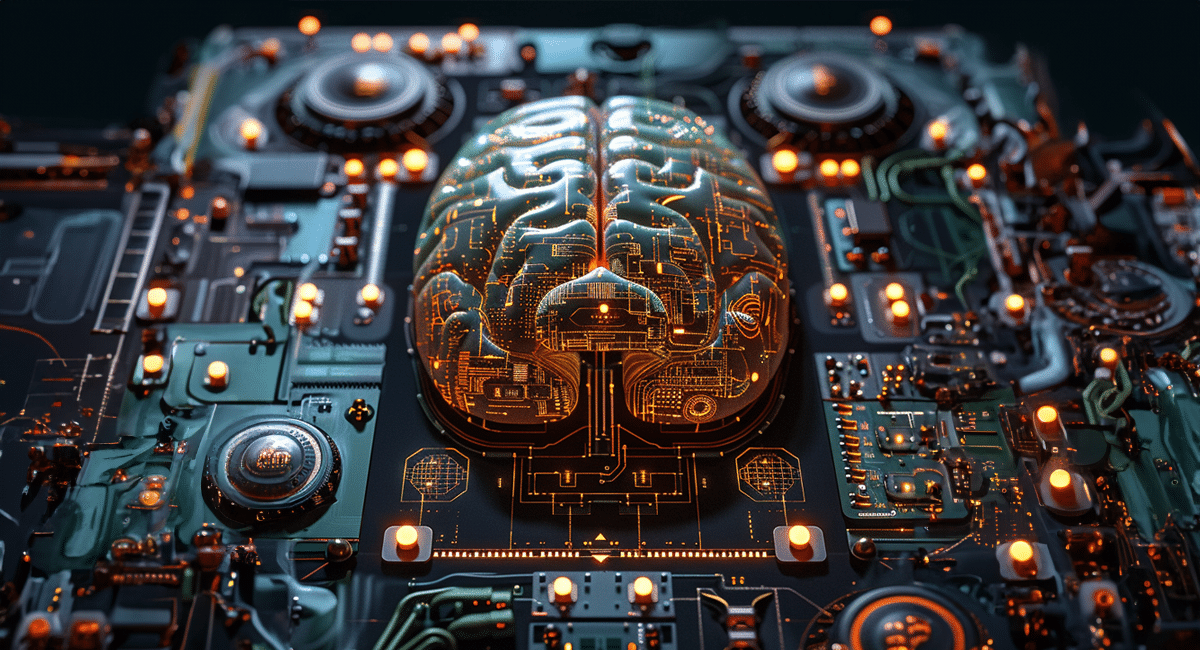Extract, Transform, and Load, or ETL, is a crucial data management process, especially in the AI and machine learning space. It's like a data-moving team that takes information from various sources, cleans it up, and organizes it neatly in one place. This process is vital for businesses and organizations to make informed decisions based on their data.
What is ETL?
ETL stands for Extract, Transform, and Load, a fundamental process in data management where data is extracted from various sources, transformed into a structured and clean format, and then loaded into a target system for analysis and decision-making.
Organizations need ETL to consolidate diverse data, standardize data formats, ensure data integrity, and prepare data for analysis and use in AI and machine learning models. This enables them to unlock valuable insights, improve decision-making, and streamline their operations. ETL plays a critical role in enabling businesses to leverage their data assets effectively, driving intelligence, innovation, and competitive advantage.
How ETL Works
Let’s walk through each phase of the ETL process.
Extract
The extraction phase is the first step in the ETL process. This is where data is gathered from various source systems. These sources can be diverse, ranging from databases, flat files, and APIs to cloud storage and external services. The primary goal during extraction is to retrieve all the necessary data accurately and efficiently without disrupting the source systems.
- Data Sourcing: Identifying and accessing the data from multiple sources, ensuring a comprehensive collection that includes all relevant information.
- Data Consistency: Ensuring the data extracted is consistent, particularly when pulling from multiple sources that may not be in sync.
- Minimizing Impact: Designing the extraction process to minimize the load and performance impact on source systems so that business operations are not affected.
- Initial Data Capture: Capturing the data in its raw form, ensuring that there's a faithful representation of the source information before any transformation occurs.
Transform
Transformation is the second phase, where the extracted data undergoes various operations to convert it into a format suitable for analysis. This phase is crucial because it ensures that the data loaded into the target system is clean, consistent, and structured.
- Cleaning: Removing inaccuracies, inconsistencies, or irrelevant data to enhance quality. This includes fixing or removing corrupted, incorrect, or incomplete data.
- Standardization: Converting data to a common format or unit to ensure consistency across different data sets. This could involve date format standardization, currency conversion, or unit harmonization.
- Normalization: Structuring the data to reduce redundancy and improve efficiency in storage or processing. This step often involves organizing the data into tables and defining relationships in a relational database.
- Enrichment and Augmentation: Enhancing data by adding relevant context or additional information from other sources to provide more comprehensive insights.
- Aggregation and Summarization: Combining data from various sources or records to summarize or create aggregate data points, useful for reporting and analysis.
Load
The final phase involves loading the transformed data into a target system, typically a data warehouse, database, or a data lake, where it can be accessed for business intelligence, reporting, and analysis.
- Batch vs. Real-Time Loading: Depending on the business’ requirements, data can be loaded in batches at scheduled intervals or in real-time.
- Data Integrity and Validation: Ensuring that the data maintains its integrity and aligns with the target system's schema and business rules.
- Indexing and Optimization: Configuring the target system to optimize data retrieval and query performance, which may include indexing and partitioning the data.
- Monitoring and Auditing: Establishing processes to monitor the loading phase for failures, bottlenecks, or data quality issues, and implementing auditing mechanisms to track data changes and lineage.
By meticulously executing each of these phases, organizations can ensure the reliability, availability, and usability of their data, thereby empowering informed decision-making and strategic insights.
ETL vs ELT
ETL and ELT are two methods of handling data, and while they might seem similar at first glance, they have a key difference in the order of operations.
ETL, as we discussed, stands for Extract, Transform, and Load. This means data is first extracted from various sources, then transformed or cleaned, and finally loaded into a storage system or data warehouse. ETL is better for projects that prioritize data quality and consistency.
On the other hand, ELT stands for Extract, Load, and Transform. This approach also starts by extracting data from different sources. However, the next step is to load this raw data directly into the data warehouse without initially transforming it. The transformation happens within the data warehouse itself, after the data has been loaded. ELT may be more suitable for AI projects that require real-time data processing.
The main difference between the two lies in where and when the data transformation occurs. In ETL, data is transformed before it enters the data warehouse, which can be beneficial if the warehouse isn't designed to handle massive volumes of unprocessed data or if the data needs to be cleaned and structured for immediate use.
With ELT, the transformation happens after the data is already in the warehouse. This method takes advantage of the powerful processing capabilities of modern data warehouses, which can handle large volumes of data efficiently. ELT is often faster because it reduces the time data spends in transit and allows for more flexibility in how data is processed and analyzed within the warehouse.
The Benefits and Challenges of ETL
ETL processes offer a range of benefits that make them an essential part of data management, especially in an era where data is a critical asset for organizations. However, like any process, ETL also comes with its own set of challenges. Understanding both can help you make informed decisions about your data management strategy.
Benefits of ETL
Data Integrity and Quality: ETL ensures that data is accurate and consistent, which is crucial for making reliable decisions. By cleaning, validating, and standardizing data during the transform stage, ETL contributes to high data quality and integrity.
Efficiency and Time-Saving: By automating the data integration process, ETL saves time and reduces the likelihood of errors compared to manual data handling. This efficiency allows businesses to focus more on analyzing data rather than managing it.
Improved Decision-making: With ETL, you can consolidate data from various sources into a single, cohesive data warehouse. This consolidation provides a comprehensive view of the business, supporting better decision-making and strategic planning.
Scalability: ETL can handle data at scale, accommodating growth in data volume and sources. This scalability ensures that you can continue to integrate and analyze data effectively as you grow.
Challenges of ETL
Complexity: Designing and implementing an ETL process can be complex, especially when you’re dealing with a large number of diverse data sources. This complexity can require significant technical expertise and resources.
Performance Issues: As data volumes grow, ETL processes can become slower and more resource-intensive. Optimizing performance can be challenging and may require continuous tuning and investment in infrastructure.
Data Transformation Limitations: The transform phase can be restrictive if not properly designed, potentially leading to loss of valuable data nuances or context. Ensuring that transformations do not compromise the data's usefulness is a delicate balance.
Maintenance and Monitoring: ETL systems require ongoing maintenance and monitoring to ensure they function correctly and adapt to changes in data sources or business requirements. This ongoing requirement can demand dedicated resources and attention.

AI and Machine Learning in ETL
Incorporating artificial intelligence (AI) and machine learning into the ETL process is like giving a smart assistant to the team that manages data. This integration brings a new level of intelligence and efficiency, transforming how data is extracted, transformed, and loaded.
With AI and machine learning, the extraction phase becomes more sophisticated. These technologies can identify and extract relevant data from a wider array of sources, including unstructured data like emails or social media posts. AI helps in recognizing patterns, making it possible to pull out valuable information that might have been overlooked using traditional methods.
During the transformation stage, AI and machine learning shine by automating complex data cleaning and preparation tasks. They can predict and correct errors, fill in missing values, and even identify and handle anomalies in the data. This not only speeds up the process but also enhances the accuracy and reliability of the data transformation.
Machine learning algorithms can learn from the data as they process it, continuously improving and adapting their methods. This means that the more data they handle, the better they become at their tasks, leading to a more efficient and effective ETL process over time.
When it comes to loading data, AI can optimize how data is stored and accessed, ensuring that the most relevant data is readily available for analysis and decision-making. It can also help in categorizing and tagging data, making it easier to retrieve and use across various business functions.
Integrating AI and machine learning into ETL not only accelerates the process but also provides deeper insights, making the data more actionable. It enables businesses to respond more swiftly to changing data trends and patterns.
Use Cases for ETL
ETL processes play a crucial role in helping organizations to leverage their data effectively. These use cases illustrate the diverse applications of ETL, including how it supports decision-making, operational efficiency, and strategic planning across different industries.
Data Warehousing
At the heart of data warehousing, ETL processes are essential. They consolidate data from various sources into a centralized repository, ensuring that data is consistent, clean, and structured. This centralized data is vital for organizations to perform comprehensive analyses, generate reports, and derive insights.
Business Intelligence
ETL is a backbone for business intelligence initiatives. By aggregating and transforming data into a format that's ready for analysis, ETL enables businesses to gain a holistic view of their operations, customer behavior, and market trends. You can use this intelligence to make informed decisions, tailor your products and services, and enhance customer satisfaction.
Customer Relationship Management (CRM)
ETL plays a key role in integrating data from various touchpoints and systems, providing a unified view of customer interactions. This integration helps you understand your customers better, personalize your services, and predict future customer behaviors. This is crucial for maintaining competitive edge and customer loyalty.
Financial Reporting
Accuracy and timeliness are paramount in financial reporting. ETL processes ensure that financial data from various departments and systems is accurately consolidated, transformed, and loaded into financial systems or data warehouses. This reliable data foundation supports the creation of accurate financial reports, compliance with regulations, and informed financial planning.
Healthcare Data Management
In healthcare, ETL facilitates the integration of data from diverse sources, such as electronic health records, patient databases, and research datasets. By consolidating and standardizing this data, healthcare providers can gain insights into patient care, treatment outcomes, and operational efficiency. ETL supports the healthcare sector in improving patient care, advancing research, and optimizing resource allocation.
Supply Chain Optimization
ETL processes empower organizations to streamline their supply chain operations. By integrating data from various stages of the supply chain, companies can track inventory levels, monitor supplier performance, and predict demand. This comprehensive view helps optimize their supply chain processes, reduce costs, and improve responsiveness to market changes.
ETL Tools
ETL tools are essential for efficiently handling the extract, transform, and load processes. These tools come with a variety of features designed to automate and streamline the ETL workflow, making data integration simpler and more effective.
The following ETL tools offer a range of functionalities to suit different needs, from handling massive data volumes to integrating with cloud services. When selecting an ETL tool, it's important to consider factors such as the specific data requirements of your organization, compatibility with existing systems, scalability needs, and budget constraints. If you choose the right tool, you can significantly enhance your data management capabilities.
Informatica PowerCenter
Informatica PowerCenter is a widely recognized ETL tool that offers robust data integration capabilities. It stands out for its high scalability, which allows it to handle large volumes of data efficiently. The tool also provides advanced data transformation features and a user-friendly interface, making it a favorite among enterprises.
Talend
Talend is known for its open-source nature, offering a flexible and cost-effective ETL solution. It provides a wide range of connectors, which allows you to integrate data from various sources seamlessly. Talend's graphical interface and drag-and-drop functionality make it accessible for users of different skill levels.
Microsoft SQL Server Integration Services (SSIS)
SSIS is a component of the Microsoft SQL Server database software that facilitates data integration and transformation. It's particularly well-suited for businesses already invested in the Microsoft ecosystem.
SSIS is known for its tight integration with other Microsoft products, ease of use, and comprehensive data transformation capabilities, making it an ideal choice for organizations looking for a cohesive data management solution.
Apache NiFi
Apache NiFi is another open-source tool that excels in data routing, transformation, and system mediation. It is designed to automate the flow of data between systems, and offers real-time data processing and visualization capabilities. NiFi's user-friendly interface and robust data provenance features make it an excellent choice for organizations that prioritize data flow management and need to process data in real-time.
AWS Glue
For organizations leveraging cloud services, AWS Glue provides a serverless ETL service that simplifies data preparation and loading processes. It's highly scalable and integrates seamlessly with other AWS services, making it a strong candidate for businesses operating in the cloud. AWS Glue is particularly effective for managing ETL jobs in a cloud environment due to its cost-efficiency and ease of use.
ETL: An Indispensable Data Tool
ETL serves as the backbone for transforming raw data into actionable insights. For IT generalists working with AI, leveraging ETL processes is crucial, as it ensures that your AI models are fed with high-quality, relevant data.
By integrating ETL into your data strategy, you empower your organization to make informed decisions, drive innovation, and maintain a competitive edge in today's data-driven world.
[/et_pb_text][/et_pb_column][/et_pb_row][/et_pb_section]



